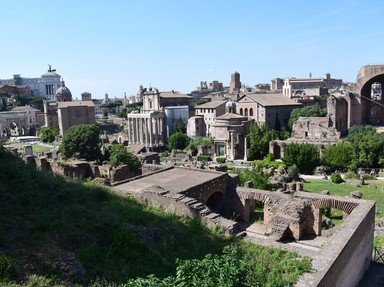Quiz Answer Key and Fun Facts
1. The cradle of the Sumerian civilization was the delta of the Euphrates and Tigris rivers. In what modern-day nation is this located?
2. Of the 25 great civilizations, which was the most durable, lasting almost 3,000 years?
3. The Indian (or Indus Valley) civilization was born around 2500 BC. It collapsed around 1500 BC when it was destroyed by invading ________.
4. The Minoan civilization, located in the Mediterranean Sea, lasted from 2000 to 1380 BC. In Minoan art, which animal symbolized the goddess?
5. The Hittite empire lasted from 1900-1200 BC. What was its capital?
6. The Chinese civilization flourished in the Yellow River basin between 1600 BC and well into the twentieth century. In around 600 BC, Lao Tzu was born. What religion did he found?
7. The Austronesian civilization existed between 1500 BC and AD 1775. What Pacific island group was its cradle?
8. The Babylonian empire flourished from 1930 BC until 539 BC, when it was conquered by ________.
9. The Inuit civilization thrived from 1400 BC to AD 1850 in the Arctic region now comprised of Canada and Greenland. The word "Inuit" comes from the Inuit word "inuk", which means ________?
10. The mighty Greek and Roman civilizations flourished inwestern Europe and the Mediterranean from 1300 BC till about AD 400. The first Roman Emperor was Octavian, better known as __________?
11. The Central American civilization flourished from 1200 BC to AD 1550. One of the greatest non-Western civilizations was developed by the Maya, between AD 250 and 900. Which of these was NOT a Mayan city?
12. Ancient Persian civilization lasted from around 1200 BC to AD 970. What was its major religion?
13. The Spartan civilization lasted from about 650 BC to AD 395. The ancient Greek city-state of Sparta was famous for warring with the city-state of Athens in what was known as the _______ Wars.
14. The Far Eastern (main) civilization, established in AD 589, scarcely survives today. Its most important state was the Mongol Empire (1279-1368). One of the Mongol Empire's greatest leaders was this man, born as Temujin and known as the Great Khan of the Mongols.
15. The Khmer civilization lasted from AD 600-1432. What modern-day nation encompasses its territory?
16. The civilization of Islam, founded in AD 632 and still flourishing, is also a religion founded by the prophet Muhammad in Arabia. What does the word "islam" mean?
17. The Far Eastern civilization consisting of Japan and Korea began in AD 645. One of the most powerful rulers of this civilization was Togugawa Ieyasu, who took this title, which is often translated as "military dictator", in 1603.
18. The civilization referred to as Western civilization, established around AD 612, flourishes today. One of the many cradles of this civilization is the English island of Lindisfarne, also known as the _____ Island.
19. The Orthodox Christian civilization began around AD 680 and survives today in Turkey and Eastern Europe. What alphabet was developed by these people?
20. The Hindu civilization arose in India around AD 775. One of its major religions was Sikhism, which was founded by this man in the late fifteenth century.
21. The Orthodox Christian (Russian) empire, established in AD 950, survives today. The dominant state was the Muscovy, which began with the reign of whom?
22. The Zimbabwe civilization flourished in Africa from AD 1150 to 1500. The civilization was composed mainly of this ethnic group, who make up the majority of the population of the nation of Zimbabwe.
23. The Ottoman Empire, located in what is now Turkey, lasted from 1324 to 1922. What occurred in 1923 to bring an end to the empire?
24. The sophisticated Andean, or Incan, civilization existed in South America from 1410 to 1533. Which city was the capital of the empire?
25. The relatively short-lived Communist civilization began in western Europe in 1848 and ended in 1991. Karl Marx, along with this man, are generally credited with inspiring Communism with their work "The Communist Manifesto", published in 1848.
Source: Author
bullymom
This quiz was reviewed by FunTrivia editor
bloomsby before going online.
Any errors found in FunTrivia content are routinely corrected through our feedback system.

